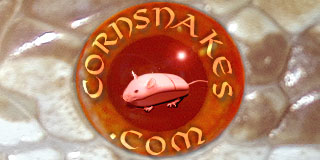marinneli
Just lovin' Cubes!
I'm sorry but I've really really had it now and don't know what to do...
I've noticed that the quality of bloodreds in Finland isn't as good as I'd hope and since then I've been keeping my eye on bloodreds here and there and especially ones for sale (in Finland and around Europe) just in case I'd see any good ones.
What I've found out is that most people assume they're snakes are definitely Bloodreds because they're from het. Bloodred x het. Bloodred cross and have a white belly. And then they're selling these "bloodreds" to people who don't know any better. I've seen so many threads on different forums concerning the wondering "Why my bloodred is brown and not red at all?"
People don't seem to understand that selective breeding and PHENOTYPE (appearance) is what makes Bloodred a Bloodred. Genotype (two recessive diffusion traits) isn't enough. That is obvious and understood among Candycanes, but people seem to have forgotten the same rules apply when it comes to Bloodreds.
Normal x Candycane = Normal het. Amel. NOT HET. CANDYCANE
F1 Normal het. Amel x F1 Normal het. Amel = Normals, Amels. MOST LIKELY NO CANDYCANES
Well, as I've said the quality of Bloodreds is very poor around here - and that's because most Bloodreds are actually only Diffuseds. But people don't see or understand it, and then they breed these "bloodreds" further and get "bloodred" hatchlings and sell them for quite a lot of money (given the fact that they're not bloodreds at all)...and even if they've been told otherwise and informed about the differences between bloodreds and diffuseds, they don't admit it.
The pictures behind the links don't directly have anything to do with the text above, but these are two BLOODREDS that are currently for sale in Sweden. And these have been bred toghether twice, and I presume the babies have been sold as bloodreds as the parents are "bloodreds" too.
Seeing the pics made me scream and cry.
Bloodred
Another Bloodred
I guess those two are the worst cases I've seen so far. Or at least very close to it. I understand it's pretty hard to identify which bloodred hatchlings are going to be good bloodreds and which not (of course parents' phenotypes and the bloodline in general should give a hint)...but how can anyone claim these two adults are BLOODREDS???
I'm so fed up with this and I'm worried about the Bloodred morph. We desperately need people to breed pure old schoold bloodreds so the breeding of these miserable jokes for bloodreds will stop and people won't ruin the whole morph!
Sorry for pouring this all out, but I'm really p*ssed off...
I've noticed that the quality of bloodreds in Finland isn't as good as I'd hope and since then I've been keeping my eye on bloodreds here and there and especially ones for sale (in Finland and around Europe) just in case I'd see any good ones.
What I've found out is that most people assume they're snakes are definitely Bloodreds because they're from het. Bloodred x het. Bloodred cross and have a white belly. And then they're selling these "bloodreds" to people who don't know any better. I've seen so many threads on different forums concerning the wondering "Why my bloodred is brown and not red at all?"
People don't seem to understand that selective breeding and PHENOTYPE (appearance) is what makes Bloodred a Bloodred. Genotype (two recessive diffusion traits) isn't enough. That is obvious and understood among Candycanes, but people seem to have forgotten the same rules apply when it comes to Bloodreds.
Normal x Candycane = Normal het. Amel. NOT HET. CANDYCANE
F1 Normal het. Amel x F1 Normal het. Amel = Normals, Amels. MOST LIKELY NO CANDYCANES
Well, as I've said the quality of Bloodreds is very poor around here - and that's because most Bloodreds are actually only Diffuseds. But people don't see or understand it, and then they breed these "bloodreds" further and get "bloodred" hatchlings and sell them for quite a lot of money (given the fact that they're not bloodreds at all)...and even if they've been told otherwise and informed about the differences between bloodreds and diffuseds, they don't admit it.
The pictures behind the links don't directly have anything to do with the text above, but these are two BLOODREDS that are currently for sale in Sweden. And these have been bred toghether twice, and I presume the babies have been sold as bloodreds as the parents are "bloodreds" too.
Seeing the pics made me scream and cry.
Bloodred
Another Bloodred
I guess those two are the worst cases I've seen so far. Or at least very close to it. I understand it's pretty hard to identify which bloodred hatchlings are going to be good bloodreds and which not (of course parents' phenotypes and the bloodline in general should give a hint)...but how can anyone claim these two adults are BLOODREDS???
I'm so fed up with this and I'm worried about the Bloodred morph. We desperately need people to breed pure old schoold bloodreds so the breeding of these miserable jokes for bloodreds will stop and people won't ruin the whole morph!
Sorry for pouring this all out, but I'm really p*ssed off...

.jpg)
.jpg)
